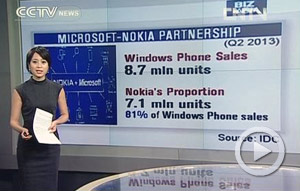Size key to success in solar panel sector
Updated: 2013-09-06 07:18
By Chris Davis in New York (China Daily)
|
||||||||
To calculate that number, the team took the costs of producing the silicon wafers, which are then made into cells. They then added indirect costs such as research and design and supplier discounts.
The MSP for most manufacturers was above current prices in 2012. At that point, China ramped up its capacity. "They expanded really fast and caught a lot of people by surprise," said Douglas Powell, a doctoral student in mechanical engineering at MIT and co-author of the report.
China does have a small edge in labor costs, the study acknowledged, but it said that doesn't have a very significant impact in a production process as highly automated as PV module manufacturing.
Wage savings give China an advantage of 7 US cents per watt over US counterparts, but that advantage can easily be offset by regional factors such as inflation, according to the report.
The key reason China can make solar panels for about 23 percent less than US companies is economies of scale, the study concluded. The typical Chinese PV factory is four times larger than a typical US plant and can negotiate better contracts with suppliers. Equipment can be used more efficiently because machines can be scheduled to run in synchonization with the various stages of the process.
What the study makes clear, Buonassisi said, is that China's edge in solar-panel production "can be replicated, if the right conditions are met".
The key is to bring the cost of installed panels into competition with the cost of electricity from the grid - without subsidies or tax breaks. The researchers predict that goal will be achieved by 2020. By then, much larger PV manufacturing facilities will be economically feasible worldwide - not just in the US and China.
"Today's technology is not quite there yet," Buonassisi said, but "we could be hitting grid-competitive costs within the next few years", and we can look for a surge in installations.
"China and the US share a common goal," he said. "Developing a low-pollution PV technology that is sustainably profitable to manufacture and deploy worldwide. Our descendants may well judge us by our ability to realize this future of great potential."

 Panda 'Bai Yun' celebrates 22nd birthday in US
Panda 'Bai Yun' celebrates 22nd birthday in US
 Exports expand in Aug amid signs of recovery
Exports expand in Aug amid signs of recovery
 Rodman back from DPRK without jailed American
Rodman back from DPRK without jailed American
 National Games: Pictures of the day
National Games: Pictures of the day
 Abe speech helps secure 2020 Games for Tokyo
Abe speech helps secure 2020 Games for Tokyo
 Djokovic, Nadal set up blockbuster US Open final
Djokovic, Nadal set up blockbuster US Open final
 Xi discusses bilateral ties with Kazakh parliament speaker
Xi discusses bilateral ties with Kazakh parliament speaker
 'Poetic' Italian documentary takes top honor at Venice filmfest
'Poetic' Italian documentary takes top honor at Venice filmfest
Most Viewed
Editor's Picks

|

|

|

|

|

|
Today's Top News
Chinese president arrives in Uzbekistan for visit
China's top admiral visits US
Exports expand in August
Guangzhou to end labor camps
Liu Zhijun associate charged
Network to take care of mentally ill
China to fill gap in aviation sector
Beijing set to host global tourism center
US Weekly

|

|






